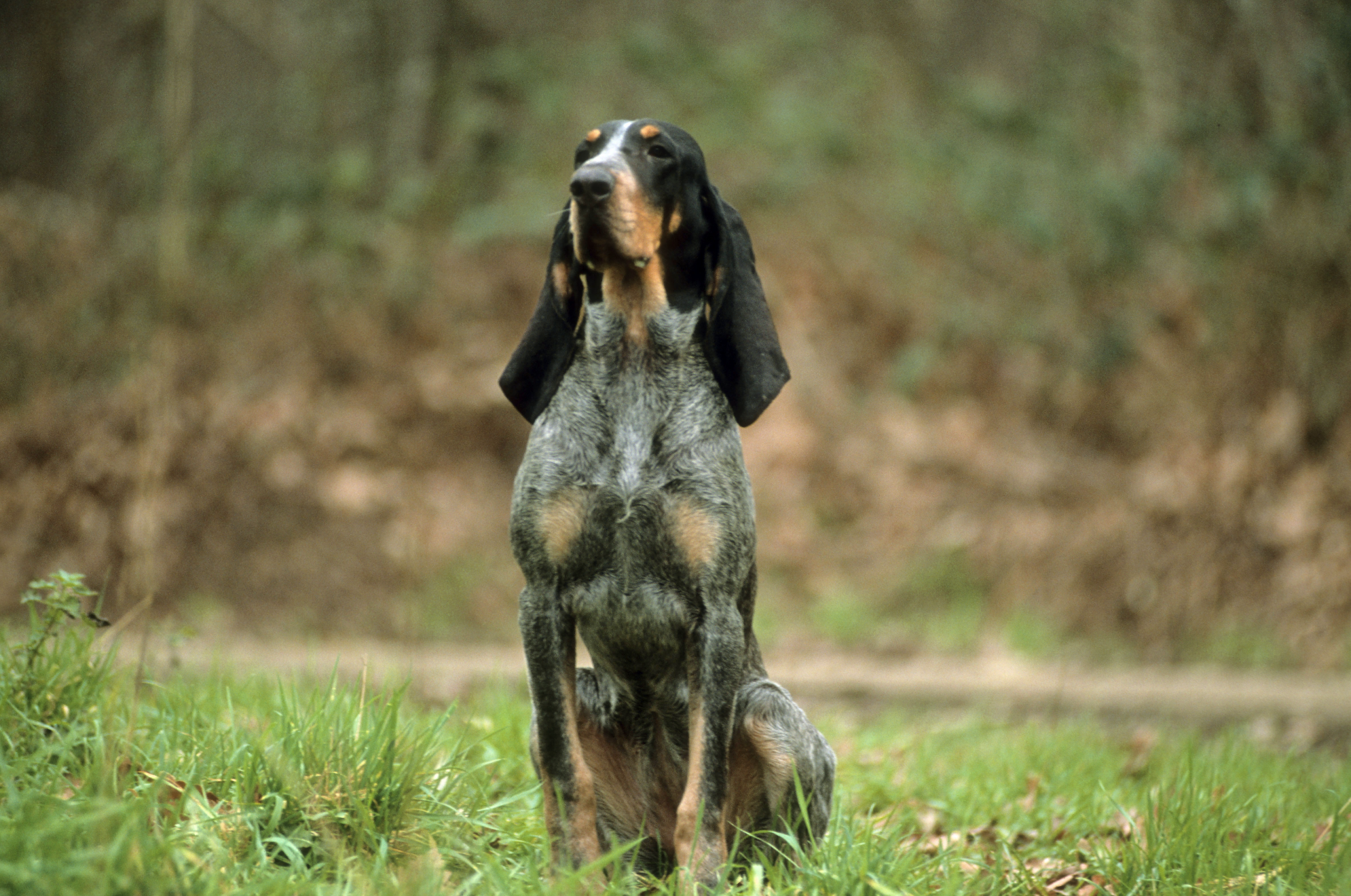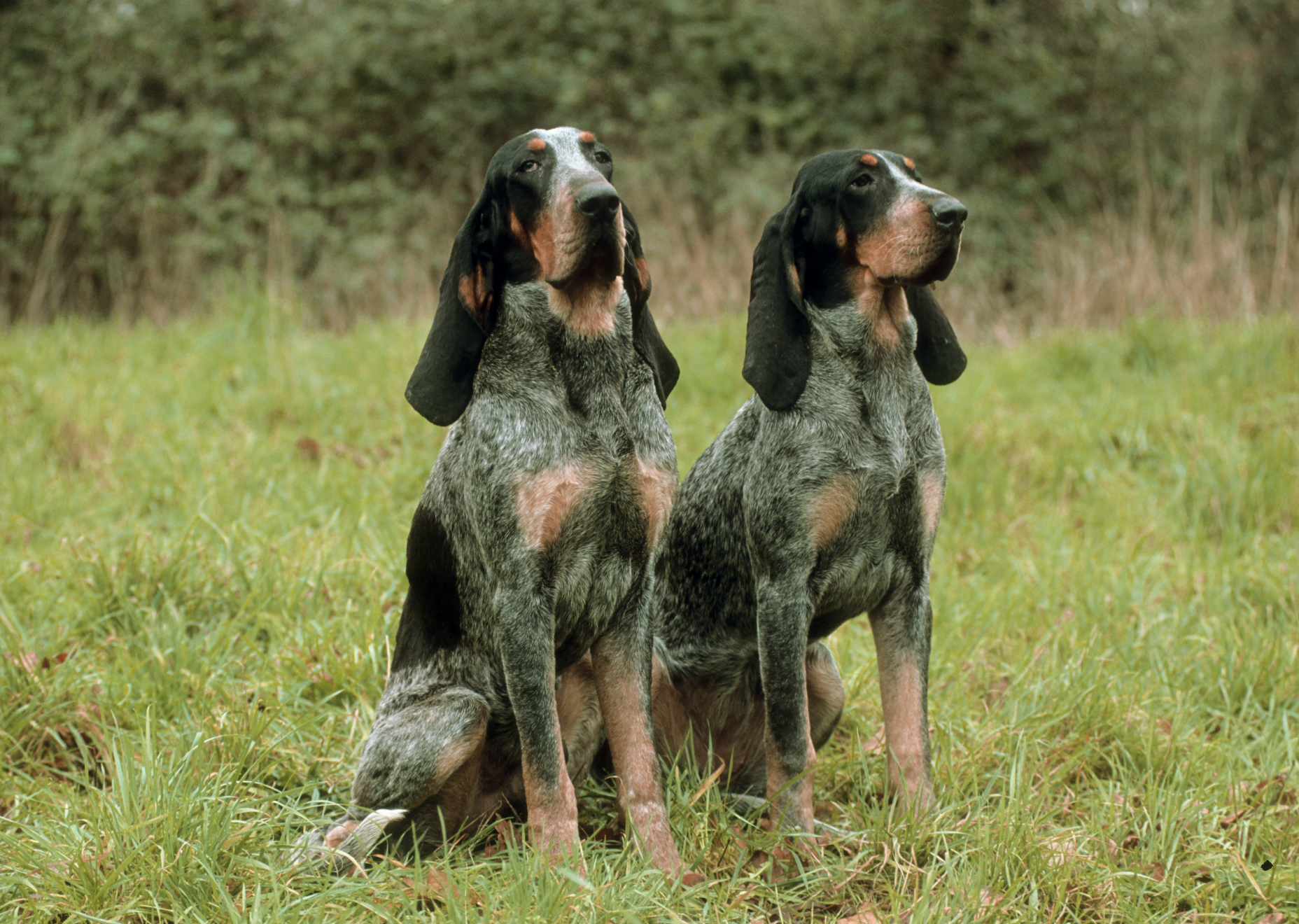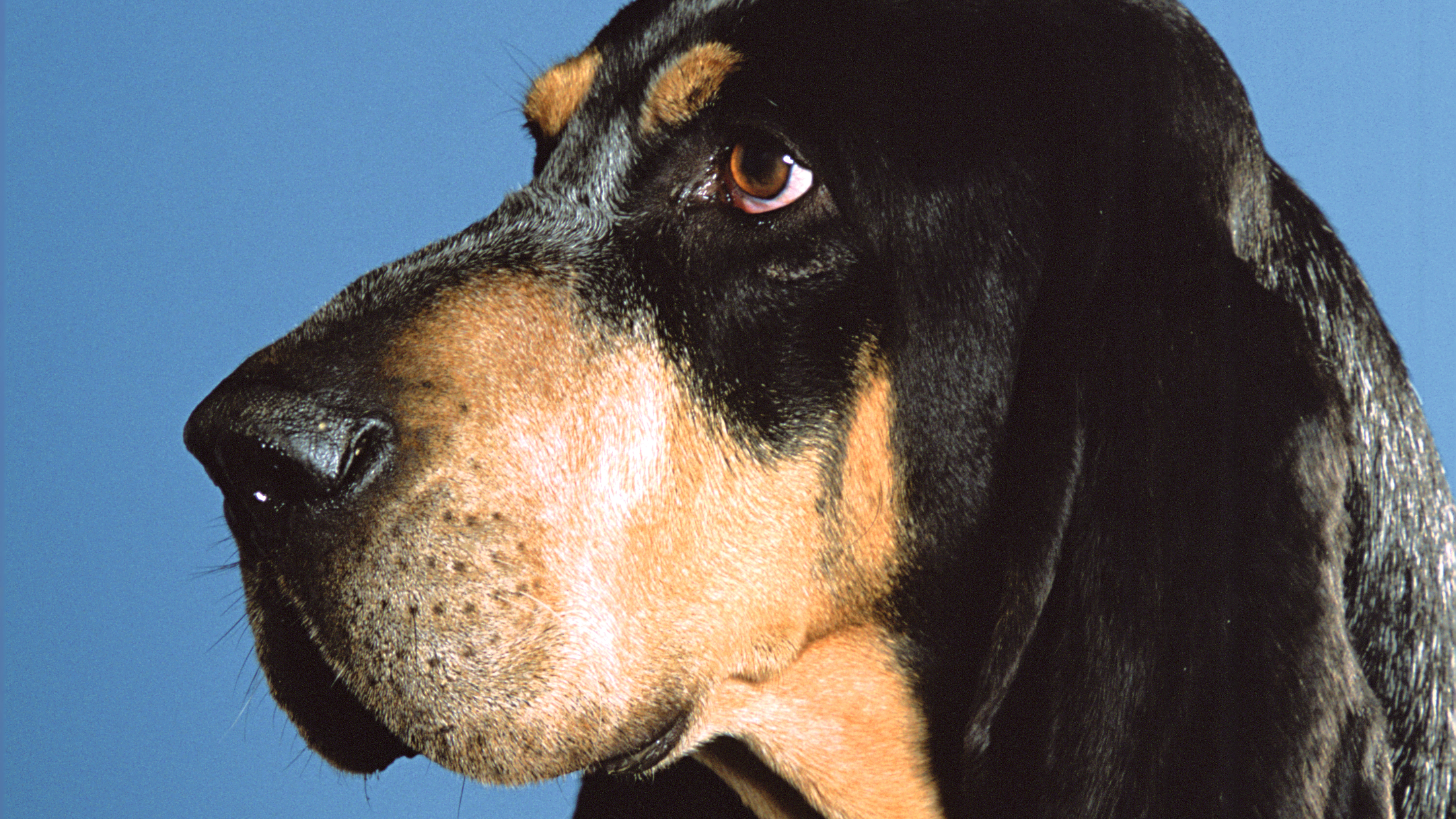
Let's talk Grand Bleu de Gascogne dogs
Few dogs epitomise nobility and grace as well as the Grand Bleu de Gascogne. One of France’s best, the breed can trace their lineage back many centuries, being used throughout the ages as a trusted hunting dog with their sturdy body and steadfast manner. In true French fashion, they sport a very stylish outer layer, in a “ticked” coat that turns heads. It is stunning to behold and makes quite an ensemble when paired with the accessory of their long, lush ears.
Official name: Grand Bleu de Gascogne
Other names: French Staghound
Origins: France

| Drooling tendencies: |
|
Warm weather? | |
| Shedding level: |  |
Suited to apartment living? |  |
| Energy level (high, low, medium) *: | Moderate | Family pet? * |
 |
| Compatibility with other pets: | Can stay alone? * | 
|
* We advise against leaving pets alone for long stretches. Companionship can prevent emotional distress and destructive behaviour. Speak to your veterinarian for recommendations.
Every pet is different, even within a breed; this snapshot of this breed’s specifics should be taken as an indication.
For a happy, healthy and well-behaved pet, we recommend educating and socialising your pet as well as covering their basic welfare, social and behavioural needs.
Pets should never be left unsupervised with a child.
All domestic pets are sociable and prefer company. However, they can be taught to cope with solitude from an early age. Seek the advice of your veterinarian or trainer to help you do this.


| Baby age: | Birth to 2 months |
| Puppy age: | 2 to 15 months |
| Adult age: | 15 months to 5 years |
| Mature age: | 5 to 8 years |
| Senior age: | From 8 years |

1/7
Get to know the Grand Bleu de Gascogne
All you need to know about the breed
Sophisticated, with their dapper coat and proud carriage, the Grand Bleu de Gascogne is France’s sporting breed extraordinaire. First things first: Their white fur mottled with blue or black spots is known as a “ticked” coat, and it’s quite a sight. Large black spots draped across their body form a dramatic pairing with usually all-black drooping ears and eyes that seem to plead for affection—of which they’re willing to give loads in return.
This is a dog that also typifies robustness in every way: The Grand Bleu de Gascogne has a very sturdy body with long and strong legs and a forceful back. It’s what has propelled them through the French countryside for a dog’s age …. meaning many centuries. They are known as a trail hound and one who has traditionally been used to track and hunt very large animals.
Given their breeding, the Grand Bleu de Gascogne will benefit from as much outdoor time as they can muster. Today’s Grand Bleu de Gascogne is still very much used for their original purpose, especially in France, but also as a faithful companion dog on the homefront, beloved for their docile and amiable demeanour.

2/7
2 facts about Grand Bleu de Gascogne dogs
1. Giving voice to it
A hound like the Grand Bleu de Gascogne will definitely have a howl, and theirs is a notable one. Using their voice is a necessity out in the field to alert their owners far in the distance to trouble, or game, ahead. Give thought to this trait if taking the Grand Bleu de Gascogne in as a family pet.
2. The nose knows
A large scent hound hailing from southern France, the Grand Bleu de Gascogne has been used there for centuries for their top-notch sense of smell. Hounds serve many purposes in their line of work but above all, they need to stay on the trail, and the Grand Bleu de Gascogne’s very keen scenting abilities help them do just that.
History of the breed
The Grand Bleu de Gascogne has a very long and illustrious lineage in their native France, taking their name from the historical region of Gascony, stretching from southwest of Bordeaux to the coast of Spain. The breed is said to have their roots in the Phoenician age, or 1,500 B.C., but after somehow making their way to France, their origin has been more recently traced to the 5th century B.C. and the time of the Gauls—the first peoples of France.
This refined dog is said to be one of two from which most modern hound breeds developed, and especially of those “du Midi” in France. Over the ages the Grand Bleu de Gascogne has been used for field sport, which they excel at with a highly developed sense of smell. King Henry IV was said to have kept a pack of the dogs whom he enjoyed visiting in their kennel often.
The breed was officially recognised by England’s United Kennel Club in 1991 and by the Fédération Cynologique Internationale in 1996.

4/7
From head to tail
Physical characteristics of Grand Bleu de Gascogne dogs
1. Ears
Long, drooping ears with rounded ends, set low.
2. Body
Substantial body with long back and broad chest.
3. Coat
Short-lying, very dense coat composed of coarse hair.

5/7
Things to look out for
From specific breed traits to a general health overview, here are some interesting facts about your Grand Bleu de Gascogne

6/7
Caring for your Grand Bleu de Gascogne
Grooming, training and exercise tips
That beautiful, ticked, blue-hued coat is nothing less than sensational and the hallmark of the Grand Bleu de Gascogne breed. Keep it clean with a weekly brushing, and since this is a dog that will spend a lot of time out of doors, baths should come only as needed. Ridding their paw pads of debris is essential after outings. Cleaning and thoroughly drying your Grand Bleu de Gascogne dog’s long ears will prevent infection. Trim their nails and brush teeth regularly for optimal health.
The Grand Bleu de Gascogne will take to exercise on their own as this is a dog with a long history of field sport, programmed to move. If they are more of a domestic dog, make sure to take your Grand Bleu de Gascogne out for at least three hours of running and roaming each day. The Grand Bleu de Gascogne is known as a gentle breed so takes to training very readily. They’re very affectionate and have a calm temperament so will require direct but never harsh commands.
7/7
All about Grand Bleu de Gascogne dogs
The Grand Bleu de Gascogne proper is a much older purebred hailing from France whereas the Bluetick Coonhound was more recently bred in America but the two breeds can trace their bloodlines to a dog given as a gift to George Washington from his friend, the Marquis de Lafayette. Both have that stunning “ticked” coat but the Grand Bleu de Gascogne is said to have a narrower skull and more well-developed dewlap, the flap of skin under the neck.
Yes! Gentle, obedient, faithful, docile—all of these adjectives have been used to describe the Grand Bleu de Gascogne. Often found today as a devoted pet, once trained, the breed is affable as well with all they come into contact with. They are a super sociable dog who enjoys being at the heart of it all.
Read more on this topic


How to adopt a dog

Things to consider before getting a dog
Sources
1 - Veterinary Centers of America https://vcahospitals.com/
2 - Royal Canin Dog Encyclopaedia. Ed 2010 and 2020
3 - Banfield Pet Hospital https://www.banfield.com/
4 - Royal Canin BHN Product Book
5 - American Kennel Club https://www.akc.org/